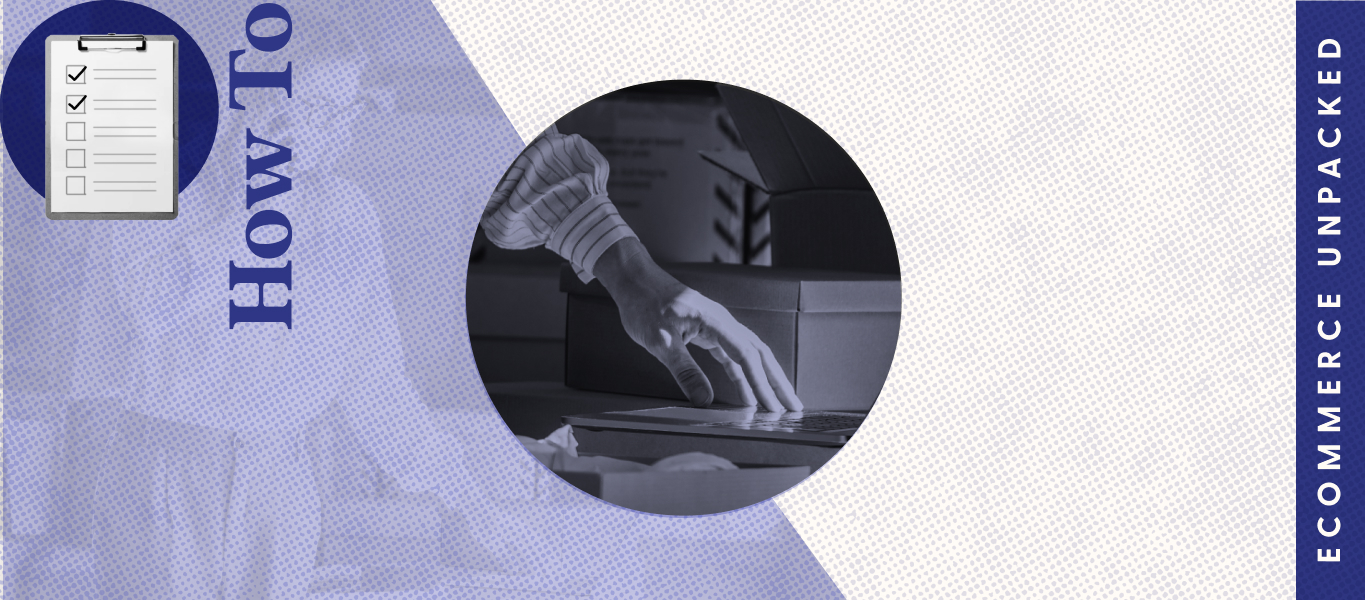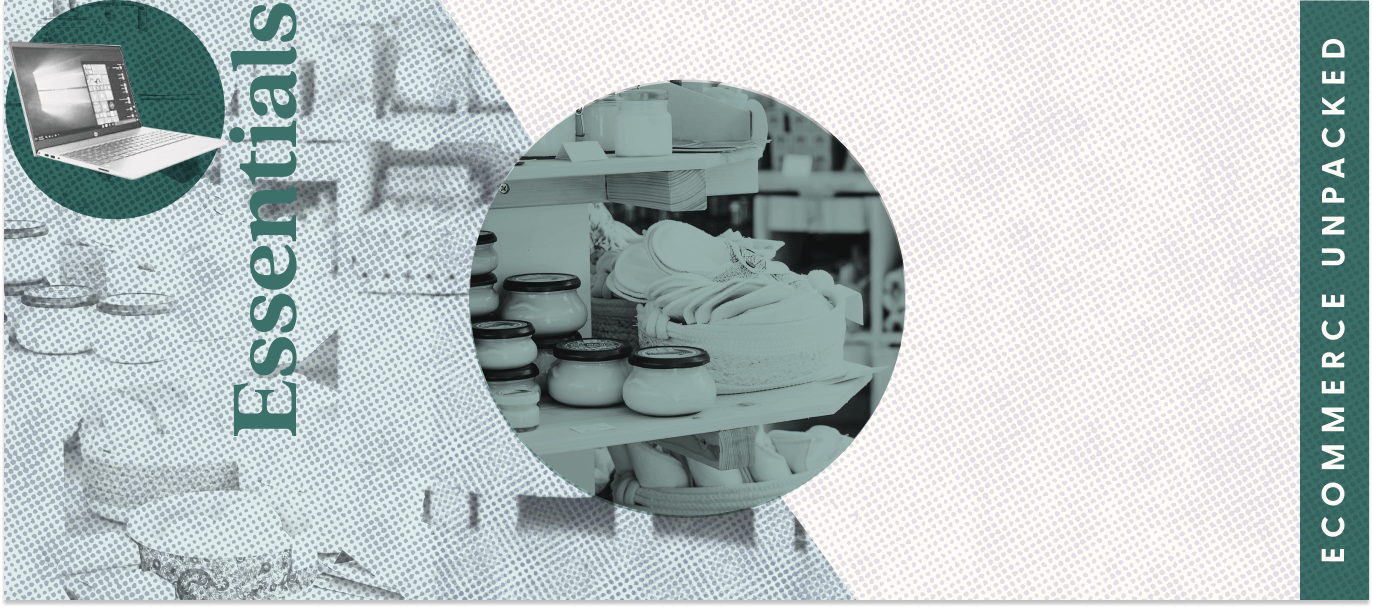The ecommerce industry has been steadily growing since its inception, and the COVID-19 pandemic only accelerated that trend. In 2021, ecommerce already accounted for almost 19% of all retail sales worldwide, and that number is projected to jump to nearly 25% by 2026.
Interested in starting an ecommerce business of your own? Let’s talk about the benefits of launching one, and what that will take in 2023.
Key takeaways
- Covid-19 accelerated the growth of the ecommerce industry, which is projected to keep growing well past 2023.
- Online stores can be relatively easy to set up and help businesses lower costs, grow sales, and meet evolving customer expectations.
- Research, preparation, and a strong product and market hypothesis can all increase the chances of a new ecommerce business succeeding in 2023.
What is an ecommerce business & why start one?
An ecommerce business is any company that sells products or services on the internet. Ecommerce has evolved significantly since the first online sale in 1994. Now, more than 55% of Americans prefer online shopping, and even brick-and-mortar stores are increasingly expected to offer an online shopping option.
While the ecommerce pie is huge, competition for a slice is fierce. Businesses compete for customers on a range of digital marketing channels, including paid ads, social media, email, and search engines. It takes a lot of effort for a new ecommerce business to get noticed.
So why start one in the first place? Is there still opportunity, despite the competitive landscape? As noted above, this is a growing market, and though it’s already large, it’s tiny compared to what it’s likely to become. We think there’s still plenty of opportunity to be found. Here are some of the advantages and benefits of launching an online store:
Easy setup
Setting up a physical store from scratch is resource-intensive. You need to find a good location, negotiate the rent, commit to a lease, get insurance, design the storefront, get government permits and inspections, pay taxes, and so on. By comparison, setting up a working ecommerce site is relatively simple.
It’s even easier if you sign up with an online marketplace. With Shopify, for example, you can open an account and start listing and selling right away. Many ecommerce platforms have drag-and-drop website builders, which are easy to use even for those with no coding experience.
You can also launch a standalone shopping site on your own domain. You’ll miss out on the distribution offered by online marketplaces, but you’ll gain flexibility and control over your brand and customer experience.
Lower costs
Compared to the costs of running a brick-and-mortar store, the fees you’ll pay to use an online platform, store your data, and process payments are tiny. What’s more, marketplaces like Amazon handle the physical inventory management, allowing you to scale according to your needs. You also save costs on personnel. Often one person can manage an entire online store, especially if you make use of automated order fulfillment services.
Endless shelf space
In a brick-and-mortar store, you can only display so many items at one time. But with an ecommerce shop, your shelf space is essentially endless. You can offer as many products as you like. Some might feel constrained by the need for warehousing, but that can be handled with dropshipping, in which the store takes the order and pays a supplier to handle the entire fulfillment process.
Wider reach
One of the greatest benefits of ecommerce is that you can expand your reach around the globe. While a physical store imposes geographical restrictions, an online store lets you sell to anyone anywhere, so long as they have internet access and you can ship to them. (To deal with international shipping, many ecommerce businesses partner with fulfillment services with hubs in different countries.)
Data access & personalization
Whether a customer buys or just browses, your online store will collect data. Consumer behavior, purchasing decisions, demographic information—all that data can, with proper analysis, yield insights to help optimize your online storefront and marketing campaigns. You can also use that data to retarget specific customers with email campaigns and other direct marketing strategies.
Selling while you sleep
Since an ecommerce shop never closes, customers can shop whenever they want, whether you’re online or on vacation. You’ll need to regularly maintain and update your online store, but the potential for passive income is considerable.
Meeting customer expectations
Finally, an excellent reason to build an ecommerce business is because that’s what so many customers want. More and more, they turn to the internet to find products and services.
Getting started
So you’re ready to jump in with a new ecommerce business. But where do you start? Keep in mind that setting up an online storefront is relatively easy, but that does not mean your online business will take off overnight. The success rates of startups can vary, but even the most optimistic studies put it at roughly 50% after four years. That said, there are ways to help boost your chances of success. Let’s jump into our step-by-step checklist for starting your ecommerce business in 2023.
The 2023 checklist at a glance
- Brainstorm and validate your idea
- Consider starting with a niche
- Evaluate products and how to source them
- Create personas of your ideal customers
- Check out the competition
- Develop your business plan
- Register your ecommerce business
- Build your online store
- Start marketing your ecommerce business
Step 1: Brainstorm & validate your idea
It’s easy to get excited about a new business idea, but it’s vital to take the time to test that idea, doing what you can to validate your product and market hypotheses.
Before you do that, of course, you’ll need ideas. A good place to start is examining current trends. Here are some sites that might be helpful:
- Trends.co – They create market reports and spot trends where they think good business opportunities exist. The Facebook group is particularly useful.
- Trend Hunter – This paid product research tool aggregates and analyzes trending articles, posts, and topics for specific industries. It also offers a free trend report in exchange for your email.
- Google Trends – This site tracks and analyzes top search terms for a specific period. You enter a search term and specify your location, period, category, and type of search, and it will tell you relevant trending searches.
- Amazon and eBay – You can use the suggestions that come up when you type a search term into these marketplaces to find the top searches related to that term.
- Social media – Find out what people are talking about on social networks relevant to your target industry. Check out hashtags or use social listening tools to gather insights.
Once you have two or three ideas that seem promising, see if they stand up to closer scrutiny. Here are some elements to investigate:
- Market demand – You can use Google Trends to see if there is demand and predict if it is likely to continue.
- Target market – Explore your potential customer base, the segment of the population likely to buy your product or service.
- Competition – An easy way to quickly identify competitors is to do a few relevant Google searches for products in your idea category.
When you’re ready, here are two concrete steps you can take to test your product and market hypotheses:
- Talk to users – Figure out who your target customer is and then speak to them. There’s an art to encouraging authentic feedback that you can use to better your business.
- See what already sells – Competition isn’t always bad. Often, if there are 100 people selling something, the market can support one more. In fact, competition can be a good sign, because it suggests demand. Observe what’s working, and explore how you might tweak it to access new customers or untapped markets.
After all this, if you still believe your idea is worthwhile, then we can move on to step two.
Step 2: Consider starting with a niche
Ecommerce stores are highly scalable, but you shouldn’t spread yourself too thin. It’s often more manageable to start by choosing a niche in your desired space and doing market research around this.
One way to choose a niche is to find out what already has some traction. Look for successful companies in the space and find out what’s working for them. Remember that competition suggests demand, but try to avoid niches already dominated by big players.
That said, you might be able to find gaps even in an over-saturated niche. You’d be surprised at what even major brands sometimes miss.
Step 3: Evaluate products & how to source them
Start by identifying a few products and finding out where to get them. The suppliers you need will depend on the type of products you intend to sell. For example, if you are selling finished goods, you need two or three reliable suppliers for those products. If you make your own products, you need suppliers for your raw materials.
Suppliers can be either domestic or overseas. Many businesses prefer domestic suppliers because the logistics are simpler. However, you might consider overseas suppliers if they are considerably cheaper—or, of course, if the products or materials are not available domestically.
Step 4: Create personas of your ideal customers
When it comes to selling your products or services, understanding your consumer is vital. A great way to gain that understanding is by creating buyer personas. These are made with a composite of the characteristics of your ideal customer. Personas typically require demographics, financial information, and insights into their needs, motivations, and pain points.
Effective buyer personas can help you develop products based on their needs. Later, they can also help you create content, marketing campaigns, and sales strategies tailored to your ideal customers.
Depending on your current offerings or goals, you might need more than one buyer persona. Sometimes, you may need to conduct interviews within your target market to identify and segment these personas. You can use Hubspot’s Make My Persona generator to give you an idea of what you’ll need.
Step 5: Check out the competition
Competitive analysis is about identifying and learning about your competitors. It can give you a better understanding of the market and industry trends. It can also help you spot your own company’s strengths and weaknesses and set benchmarks for growth.
Consider conducting a strengths, weaknesses, opportunities, and threats (SWOT) analysis of your business and of your competitors. (Don’t worry; it’s simpler than it sounds.) The meaning behind every component is as follows:
- Strengths – what the company does well that sets it apart from others
- Weaknesses – areas that need improvement
- Opportunities – external factors that could give a competitive advantage
- Threats – factors that can potentially put a company at risk
You can plot these components as quadrants in a table to easily visualize your areas of opportunity and focus.
Step 6: Develop your business plan
At this point, it’s time to develop a business plan. This will serve as a road map showing your company’s goals and how you plan to reach them. It can also be turned into a pitch deck to show potential investors, and an onboarding deck for future team members. Your business plan should include the following:
- Business name and description
- Products and services you’re selling
- Sales and revenue model
- Staff and employees
- Funding sources
- Details about the business model
It should not take more than a couple of days to create your business plan. You can use any of the free templates available online, such as this one from Shopify. What’s essential is to craft goals that are SMART (Specific, Measurable, Achievable, Relevant, and Time-Bound).
Express your goals clearly, consistently, and concisely. Your business plan should feel complete and contain all relevant information, but probably shouldn’t be more than 20 pages long.
Step 7: Register your ecommerce business
How you do this step depends on the legal structure you choose. Many online stores start as sole proprietorships or general partnerships. Taxes and liabilities will be legally associated with you as the owner. However, you must file a “doing business as” application to register the business name.
You may also choose to form a limited liability company (LLC), or corporation. The process and requirements will depend on state regulations for your chosen industry.
Generally, you will need an Employer Identification Number (EIN) for tax purposes, a registered agent, and a bank account. You may also be required to get various permits and licenses. Consult a company formation lawyer for advice.
You’ll also need to register your domain name. This will be the name of your online store and ideally will be the same as (or similar to) your brand name. You can use any domain registrar (such as GoDaddy or Namecheap) to see if the domain name you want is available. If it is, you can buy it for a small annual fee.
Step 8: Build your online store
To build your website, you can create a custom store on a hosting platform, or sign up for a seller’s account on an online marketplace such as Amazon, Etsy, or eBay. You can also set up a standalone online store on one of the many ecommerce platforms, including Shopify, BigCommerce, Magento, WooCommerce for WordPress, and Squarespace.
Many platforms offer a free version or a trial that you can use to build a store and explore the various features, customize payment and shipping options, and start selling. Some offer a free domain and hosting for the first year but may charge a small fee for subsequent years. Consider making the most of those free trials to discover which platform will suit your needs.
Step 9: Start marketing your ecommerce business
Now that your online store is up and running, you’re ready to bring in customers. The research you did on your market and setting up your buyer personas will now bear fruit.
Much like setting up your ecommerce store, you have several options for marketing it. You can do it yourself, hire someone, engage influencers, or use a hybrid approach.
You can choose from the many free and paid tools to market your store. These include search engine optimization, paid marketing, blogging, content marketing, and email marketing. Social media is another channel you can use to promote your online store and sell directly to customers.
Consider trying multiple marketing and promotion channels to expand your reach. See what works, optimize as you go, and reinvest in the channels and methods that yield results.
Three tips for running an ecommerce business
Because the ecommerce space is fiercely competitive, you’ll need to stay on your toes once your ecommerce business is up and running. Here are some tips to give you an advantage.
1. Create a memorable shopping experience
Getting people to your online store takes a lot of work, so you want to ensure they stay and keep coming back. However, people are highly critical when it comes to online shopping. It doesn’t take much for them to leave. You want to make an excellent first impression, so a lot rides on design.
You also want to make sure your site loads quickly, ideally within 3 seconds. About 24% will bounce, or leave, if a site takes more than 4 seconds to load. Most will not come back at all if your landing page takes longer than 10 seconds.
It’s also important to streamline your navigation. Provide a search bar for those who already know what they want.
Finally, optimize the checkout process so people won’t abandon their carts. Make those buy buttons easy to find, enable guest checkout, and clearly display shipping costs. Minimize the number of steps needed to complete a purchase, and make each step as easy as possible.
Remember that a satisfied customer is more likely to return and to recommend you. Invest in a customer-centric website to increase the chances of success.
2. Offer personalization options
Personalization can be a significant differentiator in ecommerce. Make your customers feel special by using dynamic content that targets them as individuals. The content may change according to the buyer’s purchasing history and browsing behavior. You can also automate language and currency preferences based on the user’s location.
3. Prioritize customer satisfaction
It always pays to surpass customers’ expectations. Offer them several channels for customer support, including self-service resources such as chatbots, FAQs, and help centers. In case all that fails, make sure your customers can easily contact you.
Then, as you earn good feedback, use it. Consider featuring customer feedback and reviews on your site and other channels, such as social media. User-generated content (UGC) also provides valuable social proof to instill trust in your products and services.
FAQs about starting an ecommerce business
What do you need to create an ecommerce store?
You’ll need the following elements and features to create your ecommerce store:
- Mobile-responsive interface
- Payment systems
- Digital shopping cart feature
- Customizable themes and templates
- Third-party app integration
- Customer and technical support
What are the most common types of ecommerce business models?
- B2B (Business-to-business)
- B2B2C (Business-to-business-to-consumer)
- B2G (Business-to-government)
- C2B (Consumer-to-business)
- D2C (Direct-to-consumer)
- C2C (Consumer-to-consumer)



